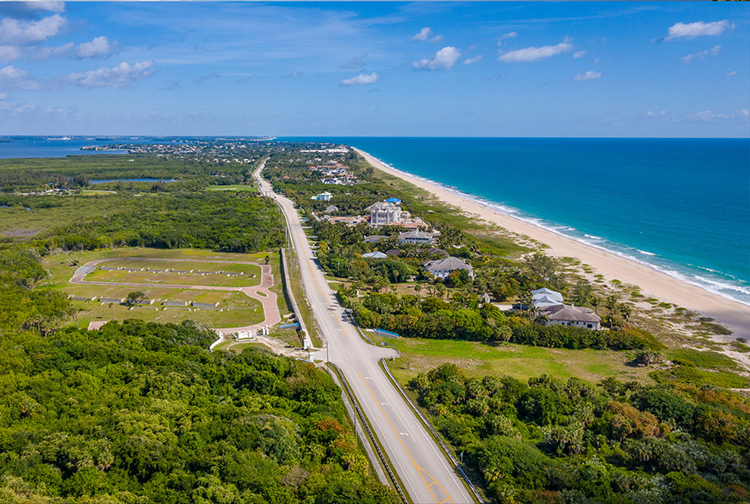More than 7,300 newcomers moved into Indian River County from the start of 2020 to the end of 2021, and if the five-year estimates from 2015 to 2019 are a good projection, most of the new residents came here from the South Florida and Tampa Bay regions, followed closely by the New York metropolitan area.
Nearly 14,500 new residents arrived during the past four years, increasing the population by nearly 10 percent to 161,000, according to county estimates.
The growth numbers were provided by the county’s Metropolitan Planning Organization, which based its estimates on permits issued for new residential construction, as well as the U.S. Census Bureau’s average of 2.47 people per household and migration tables included in its annual American Community Survey.
“We’re in a period of above-average growth – some of which has been driven by low interest rates, more affordable auto insurance and no state income tax in Florida – but it’s not going to last forever, or even too much longer,” said Phil Matson, the county’s community development director.
“Historically, growth has never been a straight line here,” he added. “We’ve consistently averaged about 1.8 percent annually, but there are peaks and valleys. It can go to 3 percent during booms and drop to 1 percent or less during recessions.” At 1.8 percent to 2 percent, however, Matson said the county is “pretty close to an ideal rate, where we’re getting the benefits of growth that outweigh the negative impact on our daily quality of life.”
Matson cited Cleveland Clinic’s Scully-Welsh Cancer Center, Florida Power & Light’s four 75-megawatt solar fields, and the American Icon Brewery – which now occupies a long-abandoned and repurposed diesel plant in downtown Vero Beach – as examples of those benefits.
“Those things wouldn’t have happened if we were a contracting community,” he said.
The negative impacts?
Among them are more congested roadways, greater demand for services and, during boom periods, higher home prices and fewer affordable-housing options.
“There has been a lot of movement in the United States in recent years, and this is a popular place for people who are retired,” MPO Staff Director Brian Freeman said.
“Also, because of our warmer climate and lower density,” he added, “the COVID-19 pandemic probably contributed to the decisions of at least some of the county’s newer residents to move here.”
According to the MPO, the county issued building permits for 2,967 new single-family, multi-family and mobile homes during the past two years, with 1,689 of them approved in 2021.
Using the Census Bureau’s average of 2.47 people per U.S. household, the county added an estimated 7,328 new residents due to new construction in 2020-2021.
Similarly, the county issued 5,851 building permits for new single-family, multi-family and mobile homes from 2018 through 2021, resulting in an estimated 14,452 new residents.
Those numbers, though, pale in comparison to the nearly 13,500 permits issued for new residential construction from 2003 through 2006, when, relying on the Census Bureau average, the county added an estimated 33,300 new residents.
More than 18,000 of them arrived as a result of the 7,400-plus permits issued from 2004 through 2005.
“There’s a lot of new construction going on here,” Freeman said, “but it’s not close to what we saw then.”
During the Great Recession, however, the number of permits for new construction plummeted to 254 in 2009, wallowed in the 300s from 2010 through 2012, and didn’t surpass 700 until 2014.
Back to the more recent estimates: The actual numbers of newcomers could be more – or less.
Many of the new residents are retired, which means they’re unlikely to have children in their households. Some of them, however, are moving into multi-generational homes, where they’re joining their adult sons and daughters and, possibly, their grandchildren.
Also, some existing houses are being converted from part-time rental homes to full-time residences, Freeman said.
Other homes have what Freeman called “accessory dwelling units,” which include mother-in-law suites, garage apartments and other small apartment-like residences on the property.
“We do get requests for those kinds of permits,” Freeman said.
As for where the new residents are coming from, Freeman said the latest five-year estimates – which will include 2020 – won’t be available until the spring. But if the 2015-2019 trend continues, most of the newcomers will have migrated north from South Florida.
“Quarterbacks,” Matson called them, making a pun on the reference to people who originally moved to South Florida from the Northeast, only to move again to the Carolinas, as “halfbacks.”
While seeing the Tampa Bay area ahead of the New York metropolitan area as the source of newcomers might surprise some, more perplexing were Nos. 4 and 5 on the list: non-metro areas (small cities with populations under 50,000 and rural areas) and the Port St. Lucie area, which includes St. Lucie County and Martin County.
“Based on the numbers, we actually lose more people to Port St. Lucie than come here from Port St. Lucie,” Freeman said.
Regardless of where the newcomers migrate from, most of them aren’t commuting to work, even to Melbourne or Port St. Lucie.
“It’s a pretty long drive to the bigger cities,” Freeman said, “and not a lot of the people who move here see it as a bedroom community.”

